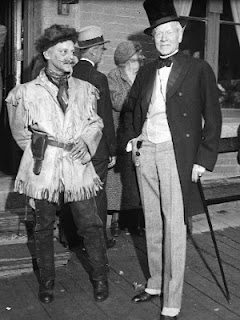The Barber of Seville by Gioachino Rossini is one of the world’s best known and most loved operas – but because we have so many popular cultural references to the music, it may be helpful to know what to listen for when you’re actually experiencing it in the Opera House.
Let’s start with the overture.
Overtures exist to give the orchestra a chance to perform all by itself – and many times, the overture features tunes that the audience will hear in the rest of the opera. However, because Rossini wrote this opera in three weeks and ran out of time before composing the overture, he recycled his own music. This overture was actually used for two other Rossini operas. Fortunately, it is forever linked in our collective memories as the overture to The Barber of Seville, even though none of the melodies in the overture are in the rest of the opera. We know these melodies well because we’ve heard them in popular culture. Case in point: Bugs Bunny. Bugs’ song is not a song from the opera – he sings to the melody in the overture.
First, listen to the overture:
Overtures exist to give the orchestra a chance to perform all by itself – and many times, the overture features tunes that the audience will hear in the rest of the opera. However, because Rossini wrote this opera in three weeks and ran out of time before composing the overture, he recycled his own music. This overture was actually used for two other Rossini operas. Fortunately, it is forever linked in our collective memories as the overture to The Barber of Seville, even though none of the melodies in the overture are in the rest of the opera. We know these melodies well because we’ve heard them in popular culture. Case in point: Bugs Bunny. Bugs’ song is not a song from the opera – he sings to the melody in the overture.
First, listen to the overture:
I bet you are all nodding your head and saying, “Oh, yeah, I remember that!” When you’re listening to this overture in the Opera House, though, try to forget Bugs Bunny and imagine some other situations that this music could be foreshadowing. Although this overture was not originally written for this opera, it sets the scene extraordinarily well.















